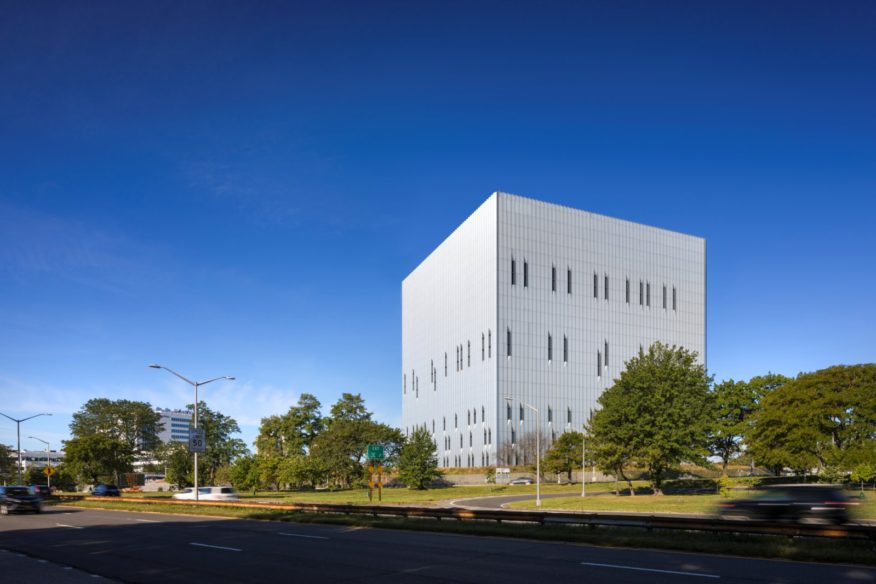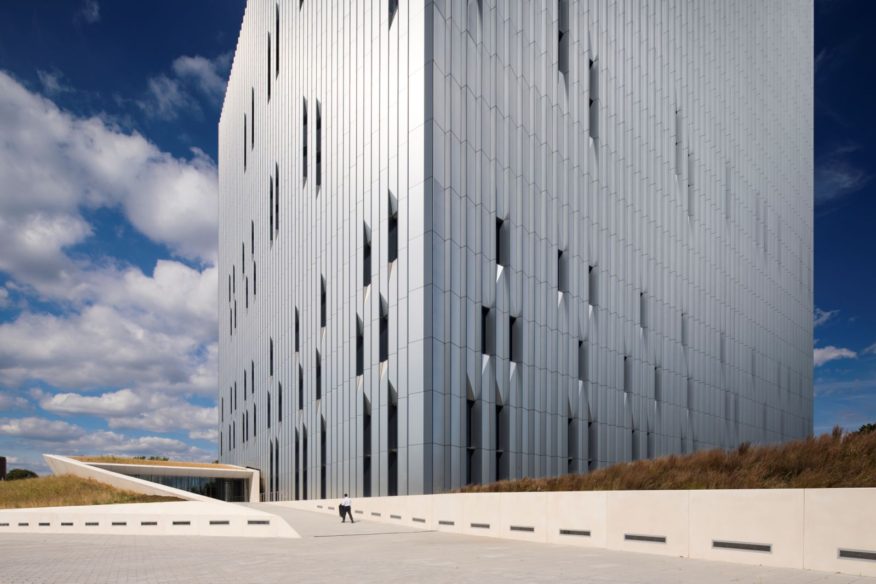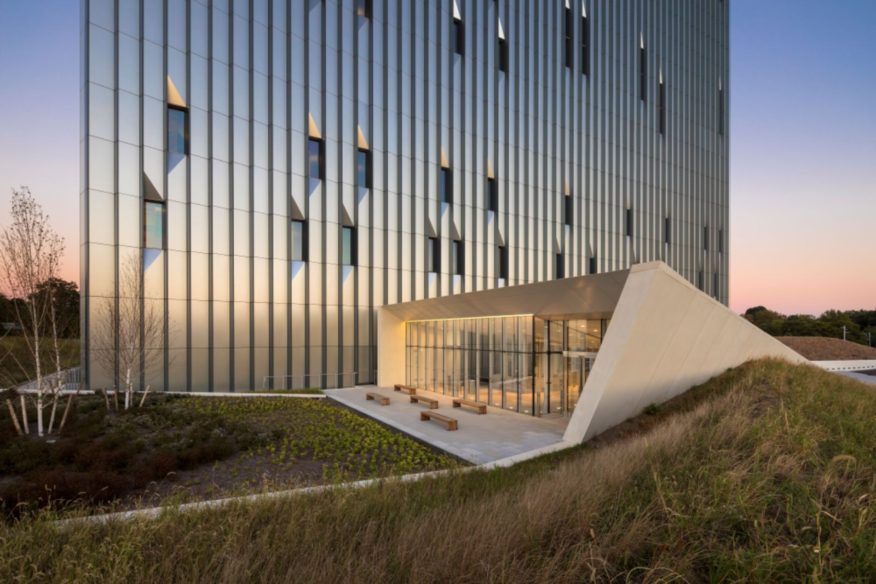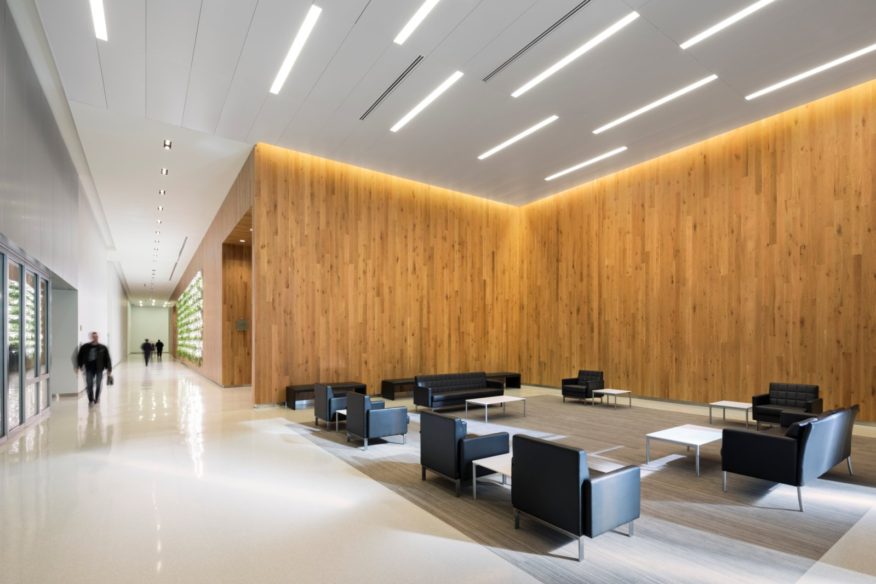
Public Safety Answering Center II (PSAC II), a new facility located in the Bronx, enhances New York City’s 911 emergency response system and sets a high standard to sustainability.

The 450,000-square-foot building brings together emergency response workers from multiple city agencies—the Police Department, the Fire Department, and Emergency Medical Services—serving as a model for interagency cooperation.

As a back-up facility to the city’s primary call center, PSAC II introduces an important layer of redundancy to New York City’s 911 system. Continuously operating and highly secure, the building enhances the city’s ability to maintain communication in the event of a natural disaster or large-scale emergency.

The project’s completion is a milestone in New York City’s overhaul of its 911 system, a long-term initiative begun by former Mayor Michael R. Bloomberg.

PSAC II sits on a prominent nine-acre site at the intersection of Bronx and Pelham Parkway and Hutchinson River Parkway. With its design, SOM confronted the challenge of creating a secure and functional building that also makes a positive contribution to its urban context.

Designed as a perfect cube, the structure has few windows due to security concerns. To mitigate the building’s potentially monolithic appearance, SOM developed a dynamic, serrated facade that includes recycled aluminum.

The building is surrounded by a wrap-around sculptural berm of wild grasses. This berm serves as a barrier to protect the facility, and it also enriches the aesthetics of the site.

From the Hutchinson River and Pelham Parkways, the berm hides the surface parking and loading dock from view; for the building’s occupants, it offers a sense of connection to nature.

The landscape requires no irrigation, which helps to achieve the project’s ambitious sustainability goal of LEED® Gold certification. SOM gave special attention to creating a soothing environment for the emergency response teams working inside.

The building’s main gathering space features an innovative plant wall developed by CASE, the design research laboratory of SOM in partnership with Rensselaer Polytechnic Institute. This plant wall not only introduces nature into the building, but also filters the air and reduces overall energy use. Source by Skidmore, Owings & Merrill (SOM).

- Location: Bronx, New York, USA
- Architect and Interior Designer: Skidmore, Owings & Merrill (SOM)
- Project Team: Gary Haney, Laura Ettelman, Peter Magill, Carl Galioto, Stephen Apking, Mark Regulinski, Nicholas Holt, Emily Mottolese, Mark Leininger, Joseph Sacco, Rob Rothblatt, Cynthia Mirbach, Carl Brown, Lesley Campbell, Ross Goldsworthy
- Structural Engineer: Thornton Tomasetti
- MEP Engineer: Jaros Baum & Bolles
- Civil Engineer: Philip Habib & Associates
- Geotechnical Engineer: Langan Engineering & Environmental Services
- Construction Manager: Tishman Construction
- Active Modular Phytoremediation Wall System (AMPS): Center for Architecture Science & Ecology (CASE)
- Sustainability Consultant: Vidaris
- Landscape Architect: Thomas Balsley Associates
- Graphic Designer: Lebowitz/Gould Design, Inc.
- Lighting Designer: Domingo Gonzalez Associates
- Blast Designer: Thornton Tomasetti
- Security Design Consultant: Shen Milson & Wilke, LLC
- Acoustical and Vibration Designer: Shen Milson & Wilke, LLC
- Vertical Transportation Consultant: Van Deusen & Associates
- Code Consultant: Milrose Consultants
- Cost Estimating Consultant: Ellana, Inc.
- Kitchen Consultant: Hopkins Foodservice Specialists, Inc.
- Client: New York City Department of Design and Construction
- Project Area: 450,000 square feet
- Project Completion: 2016
- Photographs: Albert Vecerka | Esto, Courtesy of Skidmore, Owings & Merrill (SOM)






